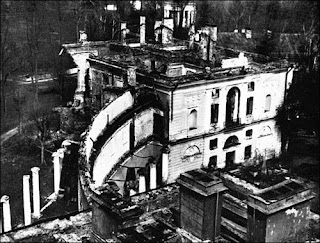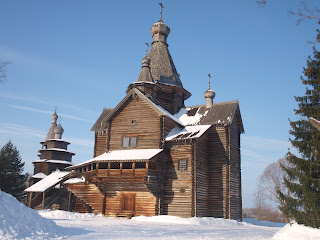On
Wednesday, 1 February, I arrived in Saint Petersburg, Russia. I
want to start out by saying that it is very cold here. Some of
you will probably think: "It is Russia, of course it is cold"
or conjure in your mind scenes of the frozen lands in the film
"Doctor Zhivago". However, I must say, that
currently, Russia and Eastern Europe are experiencing some of the
coldest temperatures on record. Today, it is not supposed to
climb out of subzero temperatures. Despite the fact that it is
cold, Russians tend to keep buildings warm, or at least the
government does, Russians cannot control the thermostat.
I
have not experienced much jet lag, but I am still getting used to the
time difference! Ten hours ahead of Chicago and eleven hours ahead of
Missoula, Montana. I am awake when the average American is asleep. It was interesting to talk with a friend who had not yet gone to sleep on Friday night, as I had just gotten up Saturday morning. Anyway, that is what I am getting used to, but I have
been sleeping just fine.
It
has been very hectic the first few days, naturally, I would suppose.
On Thursday, I took a bus tour of the city, which I found to be
very exciting. I must also note that after years of studying Saint
Petersburg, learning about the city, and viewing countless
photographs, being here in person is very surreal. Saint Petersburg
is a beautiful city: old, imperial, colorful. There are palaces
everywhere, although most of them are now museums or government
buildings. Today, I visited perhaps one of the most famous palaces in
all of Russia: the Winter Palace, Peter the Great's winter
residence in the 18th
Century along the banks of the Neva River. It is now a museum, the
Hermitage, where not only the museum is massive, but the art
collection there is, as well. It has one of the largest art
collections in the world, thanks to Catherine the Great who started collecting artwork from around the world in the mid-18th Century, competing only with the Louvre in Paris, France.
Being in the Hermitage is almost an overwhelming experience not only
because of all the fantastic art, but also because of the
architecture. It is beautiful, opulent, grandiose. I would also
like to add that being here holds a special significance because of
the film “Russian Ark” which was filmed in the museum. It was
interesting to actually be in the museum and be in the actual
locations that I saw in the movie. What is even more interesting is
that “Russian Ark” was filmed in a single, long take with four
live orchestras and hundreds of extras. It is an absolutely wonderful
film, and I recommend it to everyone.

 |
|

There is another cultural note that I would like to mention, because I find it very important. Nevsky Prospect is one of the main thoroughfares in Saint Petersburg, the central shopping district, the place where things happen, where people go to see and be seen. Nevsky Prospect has been an integral part of Saint Petersburg for much of its history and that makes it all the more interesting and exciting to stroll down. That being said, as I passed by the stores, the canals, and of course Gostinyy Dvor (a bazaar dating back to the early days of the city), all of which were bustling with activity, I could not help but think of the Nevsky Prospect about which that Nikolai Gogol wrote. I know this trip to Russia will, hopefully on many occasions, connect me with the literature I have read in school and that I have grown to love.
Last
night, I moved in with my host family, a mother, and a daughter who
is around my age. They both seem very nice, helpful, and patient.
The apartment is very nice. I am told that it is around 100 years
old, which, judging from the interior, does not surprise me. Right
now, my nerves are getting the best of me because I have become a
little bit rusty with my Russian following a six week break from
school. However, I am finding, slowly, that the more I speak Russian
with them and interact with them, the more comfortable I feel. So,
knowing this, I am excited to see what will happen in the coming
days, weeks, and months.


































